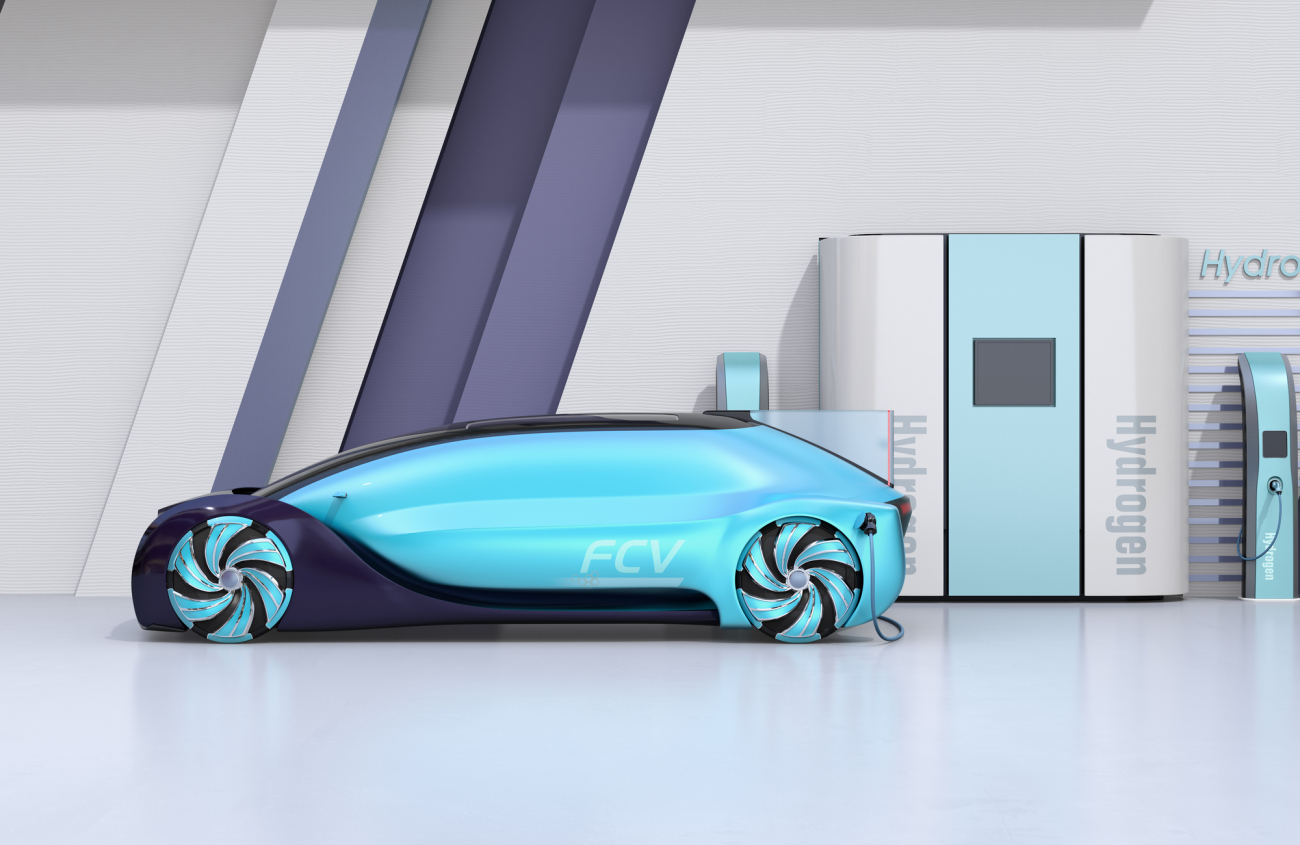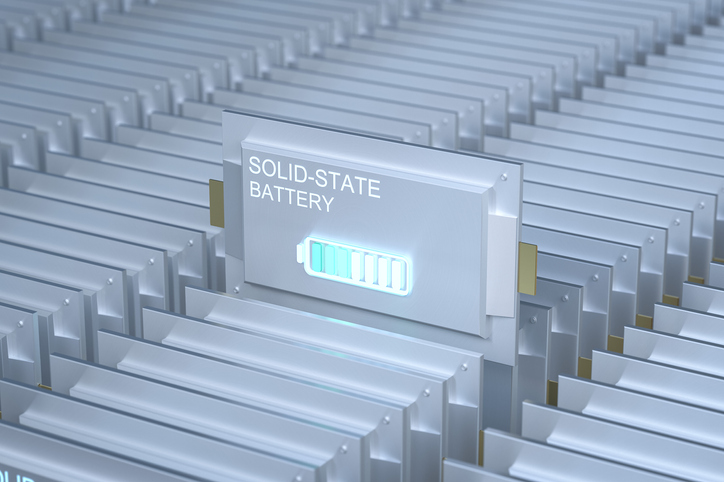Hydrogen Powered Vehicle: A Greener Future
Researchers believe that utilizing hydrogen, the most abundant element in space, could help mitigate the harmful environmental effects caused by the planet’s 1.2 billion vehicles, which currently rely on gasoline and diesel fuel combustion. Like other electric vehicles, Fuel Cell Electric Vehicles (FCEVs) use electricity to power an electric motor. Unlike other electric vehicles, FCEVs generate electricity using a hydrogen-powered fuel cell instead of just drawing electricity from the battery. The use of hydrogen as a fuel in internal combustion engines (ICE) or fuel cell cars is a promising option for the transportation sector’s future. Studying the development and diverse attributes of hydrogen, particularly in the application of transportation engines, has emerged as one of the most important research areas, owing to the various problems in hydrogen production and use procedures.
This article analyses the progress and problems of developing a clean transportation system based on hydrogen-powered vehicles. Researchers considered hydrogen applications in various types of transportation engines, particularly fuel cells and IC engines, as the dominant fuel for the future. When compared to fossil fuel-based ICEs, H2 ICEs gain 20-25 percent efficiency.
Configurational Comparison
In addition to these key components, FCEVs incorporate innovative technology to enhance efficiency, including a regenerative braking system that captures and stores the energy dissipated during braking.
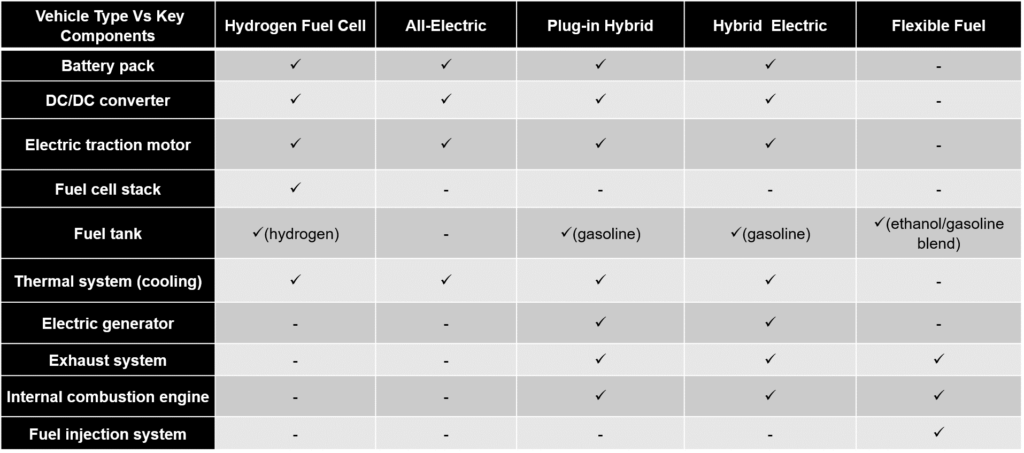
Technology Parameters
Fuelling and Driving Range
FCEVs use pure hydrogen gas stored in vehicle tanks as fuel. Refueling them takes less than 4 minutes, and they have a range of over 300 miles, similar to traditional IC engine vehicles. Hydrogen possesses an energy yield of 122 kJ/g, which is 2.75 times larger than numerous hydrocarbon fuels.
Availability
Major automakers are currently selling or leasing FCVs in some markets, especially in California, where some hydrogen filling stations already exist. Furthermore, planners and builders are developing stations in the Northeast and Hawaii, and cities such as Boston, Massachusetts, and Flint, Michigan, already have fuel-cell transit buses operating on their streets.
Natural gas is the primary source of hydrogen fuel, but hydrogen gas can also be obtained from water, oil, coal, trash, and plant materials. Additionally, some pilot projects have used landfill gas and wastewater to make hydrogen fuel.
Emissions
Hydrogen has three times the heating value of petroleum and produces substantially fewer toxic vehicle exhaust emissions in internal combustion engines and fuel cells, which is one of the most important disadvantages of fossil fuels. Hydrogen, the most plentiful element, has the highest specific energy content compared to fossil fuels.
Engines for Transportations
The use of hydrogen as a fuel in internal combustion engines (ICE) or fuel cell (FC) vehicles is a feasible direction for the transportation sector’s future.
Hydrogen Fuel-cell Vehicles: An electric motor powers hydrogen fuel-cell cars, categorizing them as e-cars. One crucial difference between hydrogen fuel-cell cars and other electric vehicles is that hydrogen cars produce the electricity themselves. As a result, the vehicle does not possess a built-in battery that can be charged from an external power source, setting it apart from fully electric or plug-in hybrid vehicles. Hydrogen cars, on the other hand, include fuel cells as the inbuilt power plant.
Hydrogen-fueled IC Engines:
It is an engine-powered hydrogen vehicle. Vehicles with hydrogen internal combustion engines differ from hydrogen fuel cell vehicles (which use electrochemical use of hydrogen rather than combustion). Instead, the hydrogen internal combustion engine represents a modified version of a conventional gasoline-powered internal combustion engine. It eliminates a traditional petroleum engine’s principal source of greenhouse gas emissions by not producing carbon or CO2. An option that does not necessitate considerable adjustments to standard ICEs is the use of liquid hydrogen. The system feeds liquefied hydrogen into an expansion chamber, converts it to cold hydrogen gas, and then sends it to the combustion chamber.
Hydrogen-only Engines: Inside Spark Ignition (SI) engines, hydrogen has the following properties as the fuel when compared to traditional gasoline such as its higher diffusivity compared to gasoline and methane, lower ignition energy requirement, and higher flame velocity are desirable for Spark Ignition (SI) engines. SI engines utilize hydrogen in one of the following ways:

- Manifold induction: Low-temperature hydrogen is injected into the manifold through a valve-controlled channel.
- Direct introduction: Hydrogen is stored in a cryogenic cylinder. A pump transports liquid hydrogen to a heat exchanger, where it is evaporated and then pumped into the engine as cold hydrogen gas.
- Hydrogen addition to gasoline: A compressed hydrogen-gasoline mixture is supplied to the ICE, which is ignited by a spark.
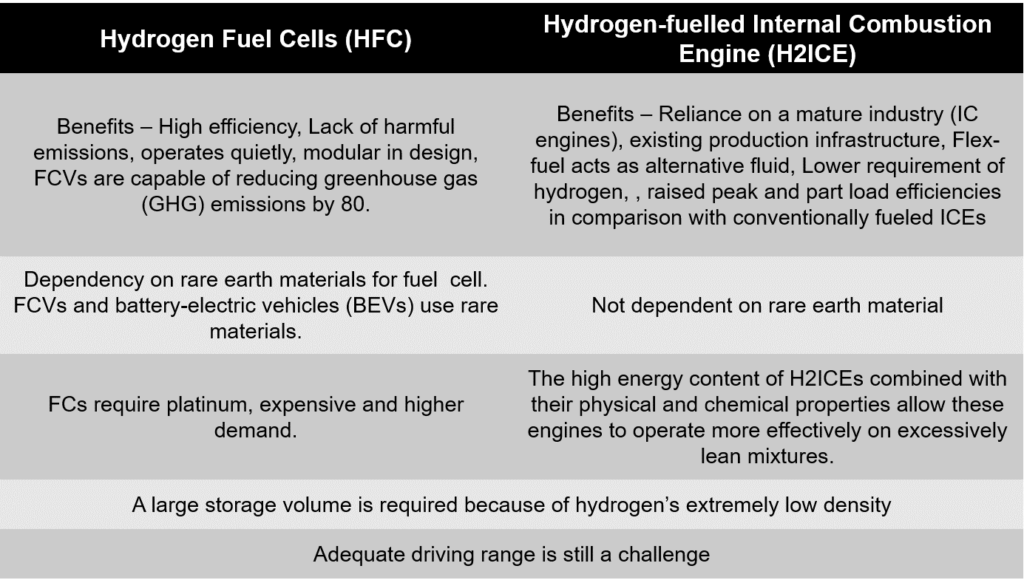
Technology Constraints
The Asia Pacific region considers the high cost of FCEVs and the limited hydrogen fuel infrastructure as major constraints for this technology. Before hydrogen is used as a fuel, it must be separated from other compounds despite its abundance in space. This process can consume a lot of energy. A few technological challenges associated with Hydrogen FCEVs are mentioned below:
Hydrogen Powered Vehicle: Technological Challenges
- Safety and Stability of Hydrogen Vehicles: Considering fuel with three features – low density, high diffusion coefficient, and high specific heat – is considered safe. Wider ignition limits and lower ignition temperatures, on the other hand, make the fuel less safe by expanding the range of possible fires. Hydrogen is very light (density of air: 6.9%), 4 times as diffusive as NG, and 12 times as diffusive as gasoline; hence, there is less risk of combustion or explosion. However, hydrogen can burn in lower concentrations, which causes safety concerns.
- Hydrogen Storage: Building a successful hydrogen economy requires various levels of hydrogen storage, including storage at production hubs, filling stations, onboard cars, and nationwide as a strategic reserve. The difficulty related to the hydrogen economy is hydrogen storage. The task at hand is to find a storage container material that meets three criteria: high hydrogen density, fast release/charge kinetics with low energy barriers to hydrogen release and charge, and reversibility of the release/charge cycle at moderate temperatures (70–100°C), all of which must be compatible with the FCs.
- Hydrogen Transport and Delivery: Compressed gas pipelines, cryogenic liquid trucks, and compressed tube trailers are all possible hydrogen delivery options. Due to hydrogen’s low density, liquid or pressurized hydrogen transportation is inefficient. High-purity stainless steel piping with a maximum hardness of 80 HRB is preferred for pipelines. Distance is a significant consideration when deciding on a hydrogen delivery technique. Due to the specific physical and chemical characteristics of hydrogen, it is necessary to make investments in the construction of pipelines using high-quality materials.
Today, companies produce hydrogen each year from natural gas and coal. This process pollutes the atmosphere and warms the earth, not saving it.
Market Driving Players and their Products
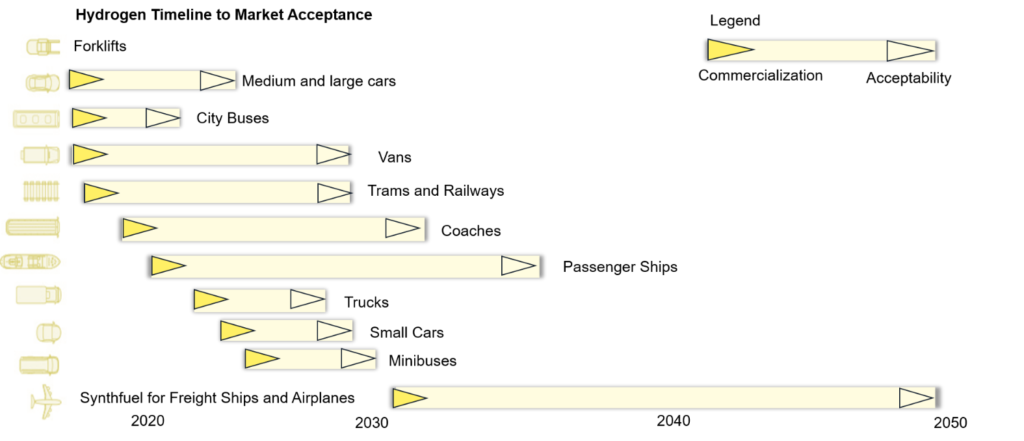
Toyota Mirai: Toyota’s latest hydrogen-powered vehicle, the 2021 “Toyota Mirai,” set a Guinness World Record for traveling the longest distance without refueling during a 1360 km (approximately 845 miles) trip around Southern California.
Hyundai Nexo: The Hyundai Nexo is the world’s best-selling hydrogen-powered electric vehicle. Some reports state that Hyundai had a 51.7% market share in the global FCEV market in 2021.
Overall, in 2021, while Toyota sold 3,700 units of the Toyota Mirai, Hyundai delivered 4,700 units of the Hyundai Nexo.
Most Innovative Start-ups in Hydrogen
The top five innovative hydrogen-based startups are as mentioned below:
C-Zero: This existing start-up produces hydrogen and solid carbon from natural gas by using advanced thermocatalysis to remove the carbon from the natural gas. C-Zero’s technology enables the production of commodity hydrogen for fuel cell vehicles.
Hyperion: This Los Angeles-based start-up made a supercar that runs on Hydrogen. This hydrogen car can sprint from a standstill to 60 miles per hour in 2.2 seconds and travel 1,000 miles before running out of fuel.
HyPoint: This is a US-based startup developing a hydrogen fuel cell system with zero carbon dioxide emissions. HyPoint’s has patented technology related to “Turbo Air-Cooled Fuel Cell Systems”, which offer a lightweight and simpler design of liquid-cooled systems.
HyTech Power: This US-based startup offers hydrogen energy solutions for internal combustion engine-based vehicles. This start-up has designed an on-demand hydrogen generation and injection retrofit system for multiple off-road and on-road diesel engine applications.
HYON: Nel Hydrogen Solutions, PowerCell Sweden, and Hexagon Composites formed a joint venture company to provide hydrogen production, storage, and transportation solutions.
Hydrogen Powered Vehicle: Joint Ventures
General Motors, Navistar, and the trucking firm J.B. Hunt are planning to build fueling stations and run hydrogen trucks on several U.S. freeways.
Toyota, Kenworth, and the Port of Los Angeles have begun testing hydrogen trucks for heavy-duty vehicles such as the ones moving goods from warehouse.
Different Types of Hydrogen Powered Vehicles
HICEVs, or Hydrogen Internal Combustion Engine Vehicles, function like conventional gasoline cars. However, they rely on hydrogen combustion instead of gasoline as fuel. While these vehicles do not emit any harmful pollutants through their tailpipes, they are comparatively more intricate in terms of mechanics when compared to FCEVs. Consequently, HICEVs may necessitate additional maintenance throughout their lifespan.
Plug-in Hybrid Hydrogen Vehicles (PHHVs) are a unique blend of conventional electric vehicles and hydrogen fuel cells. These vehicles can recharge their batteries by plugging into an electrical outlet while also utilizing hydrogen as an alternative power source when necessary. By combining the advantages of electric and hydrogen-powered vehicles, PHHVs offer enhanced benefits such as an extended driving range and quicker refueling times.
Initiatives by Government Organizations to Boost Hydrogen Vehicles
Rising government initiatives and investments to increase the number of hydrogen refueling facilities are positively influencing the market progression.
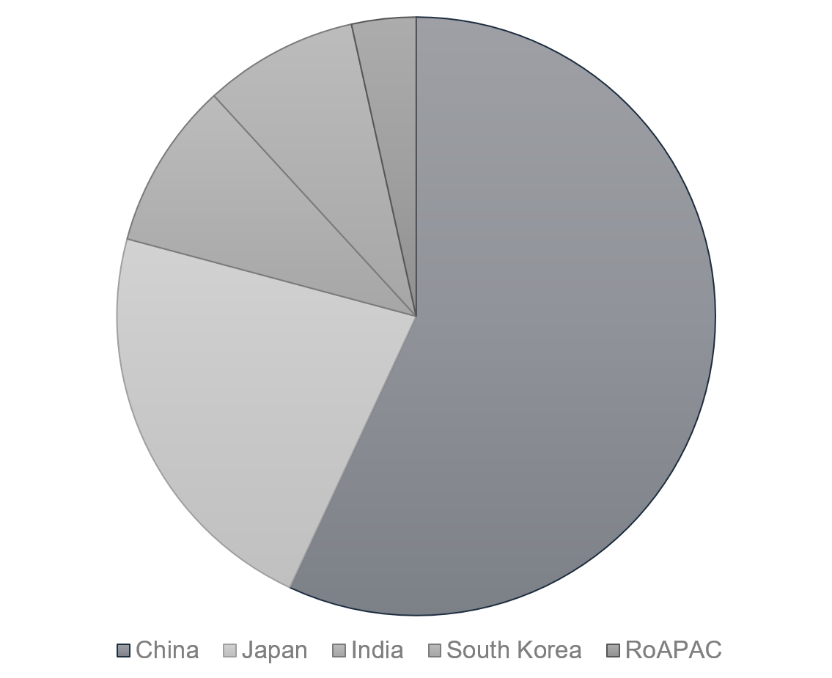
Stringent government rules to curb pollution levels and ban diesel engines have accelerated the development of alternative fuel vehicles in the region.
The APAC region is expanding as a result of strong government policies that encourage the acceptance of such vehicles throughout the region.
The government of India (Ministry of New and Renewable Energy) has sponsored extensive field trials of hydrogen-operated three-wheelers for passenger and cargo version vehicles.
In India, the country’s largest power generator, National Thermal Power Corporation (NTPC), is planning to procure electric vehicles powered by hydrogen fuel cells for pilot projects.
European Parliament Position: On July 10, 2020, the European Parliament approved a resolution that emphasized the potential of hydrogen for energy-intensive industries, transportation, and seasonal energy storage. The resolution also proposed the inclusion of a hydrogen initiative as an Important Project of Common European Interest (IPCEI) in a comprehensive European approach to energy storage. The Committee on Industry, Research, and Energy (ITRE) adopted its own initiative report on energy system integration (rapporteur Christophe Grudler, Renew France) on March 22, 2021, which takes up and expands on these themes.
Latest Developments
Development 1:
Honda unveiled the CR-V e:FCEV: On 28th Feb 2024, Honda unveiled a hydrogen fuel cell vehicle that can be charged at home. With this launch, Honda has become the first Japanese company to offer a plug-in FCV that can be conveniently recharged at home.
Fuel cell vehicles (FCVs) generate electricity by a chemical reaction between hydrogen and oxygen, powering the motor to propel the vehicle. However, a shortage of hydrogen refueling stations has hindered their widespread adoption.
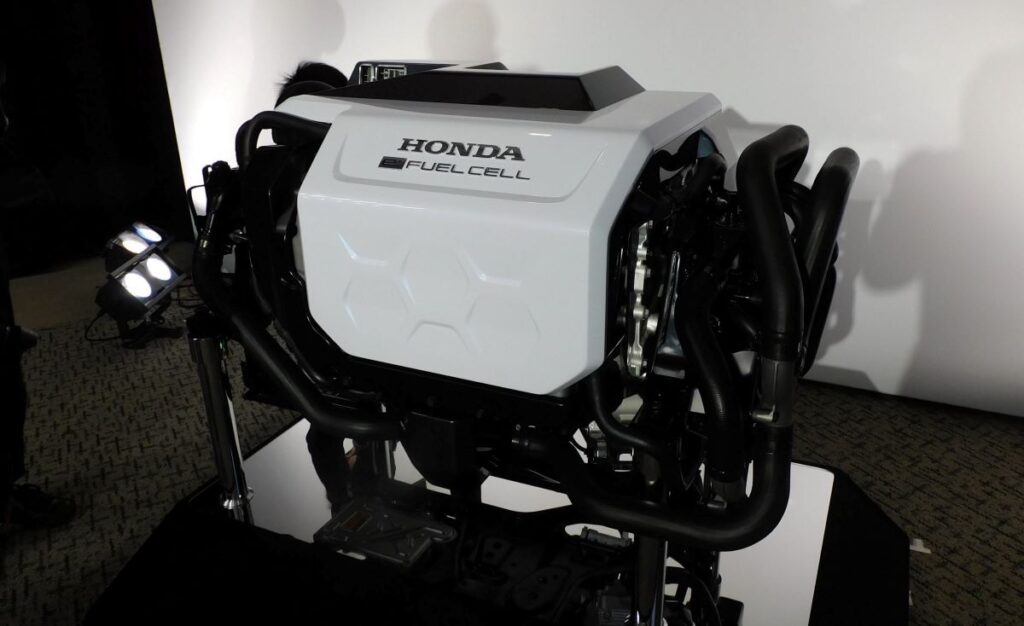
Honda developed the new model’s fuel cell system jointly with the US auto giant General Motors (GM). The car can travel over 600 kilometers with a single hydrogen refueling and over 60 kilometers per charge.
Development 2:
Ferrari’s Inverted Hydrogen Engine: (US20240066970A1)

Ferrari’s internal combustion engine is oriented vertically, with the drive shaft arranged higher than the cylinders. It is powered by four hydrogen tanks stored at high pressure: two tanks are spherical and have the same dimension, while the other two tanks are cylindrical and have different dimensions. The two tanks (spherical) are arranged beside an engine block on the two opposite sides of the internal combustion engine.
